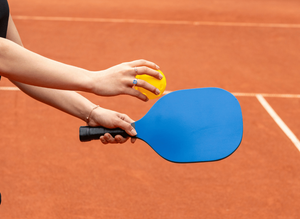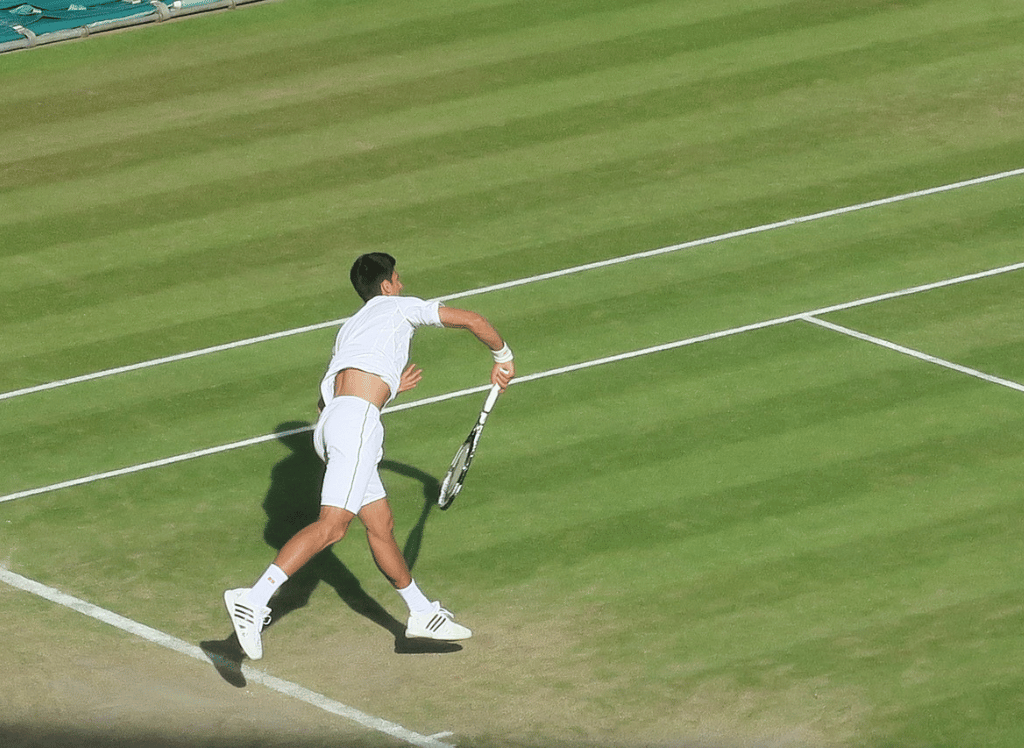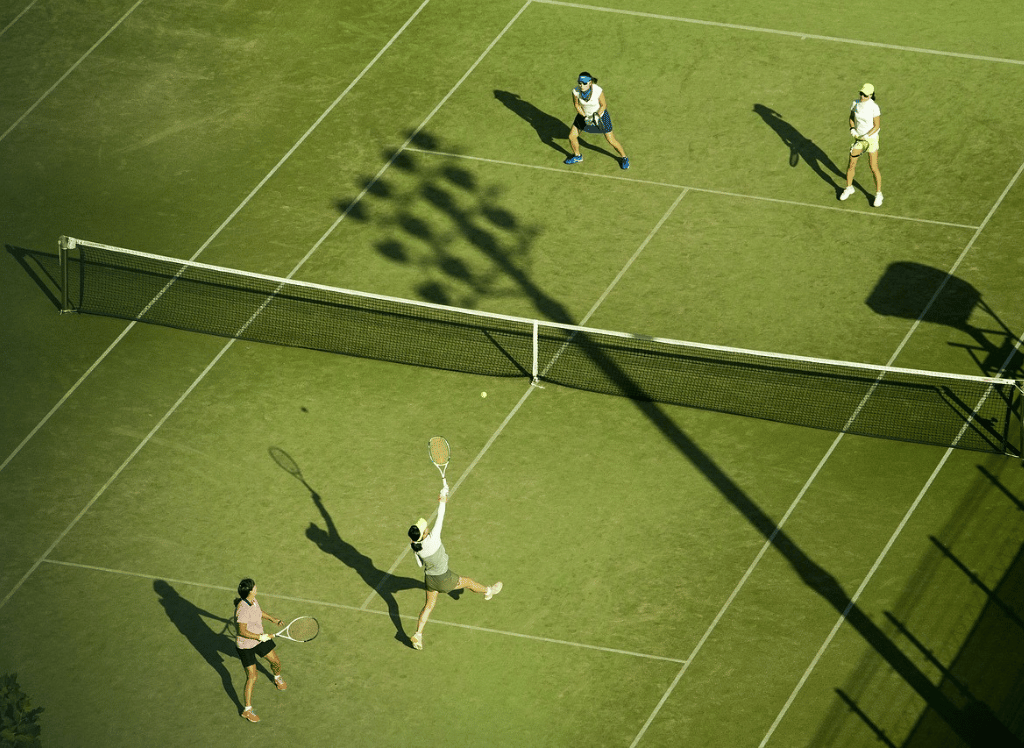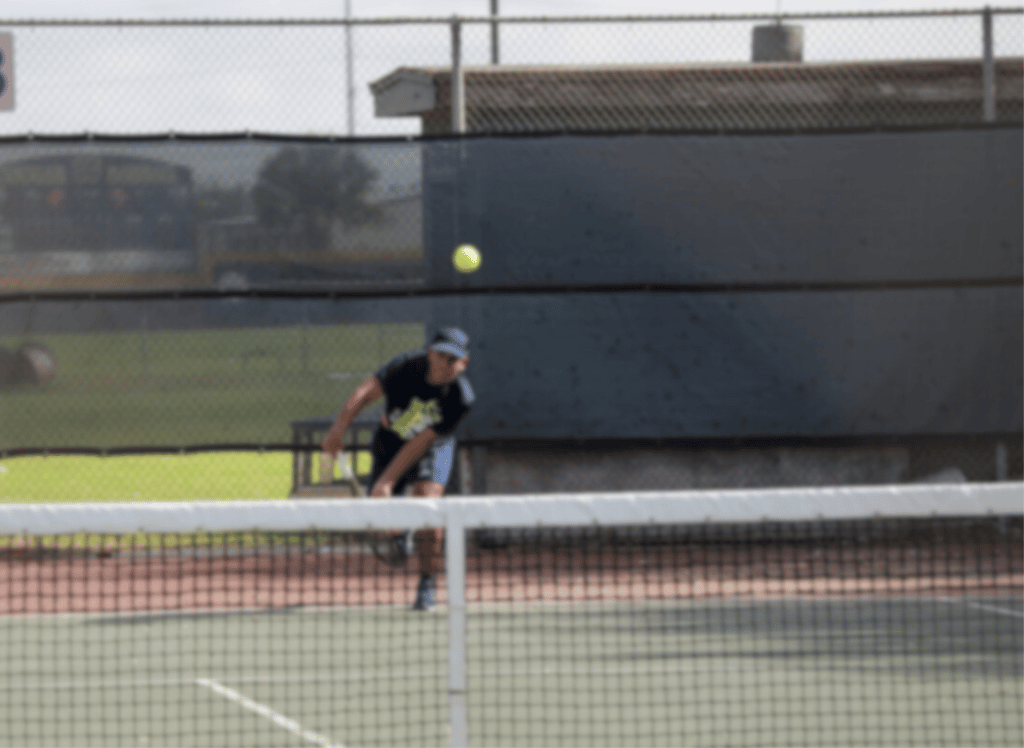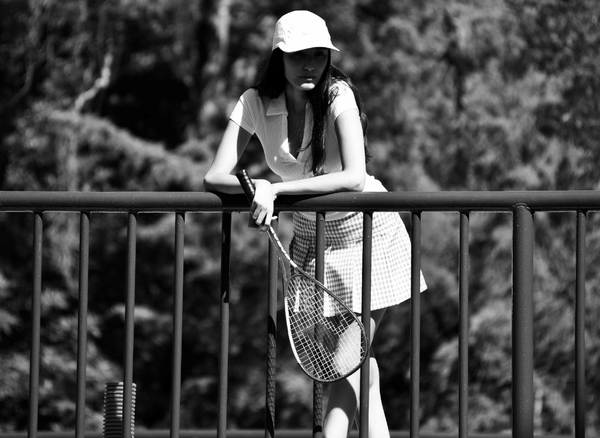Serving in tennis is like trying to impress your crush with a magic trick – it looks easy until you actually try it. The serve is the only shot in tennis where you have complete control, so naturally, it’s the one we mess up the most. To start, you need to understand the basics: the grip, stance, and toss.
First, let’s talk about the grip. Some former pros like the Williams sisters used the Eastern grip. For most, the continental grip is your best friend; not the Western grip. Imagine you’re shaking hands with the racket – that’s the grip you want. Now, stand with your front foot pointing towards the right net post if you’re right-handed, and your back foot parallel to the baseline. Your stance should be relaxed but ready to spring into action, like a cat about to pounce on an unsuspecting mouse.
The Toss
The toss is where many tennis players lose control. It’s like trying to throw a pizza dough in the air and catching it perfectly – easier said than done. Hold the tennis ball with your fingertips, not your palm, and use your tossing arm to lift it gently into the air. The ball should go straight up, not veering off like a drunk uncle at a wedding.
Your tossing arm should be fully extended, and the ball should reach its peak at about 12 o’clock position, just above your head. If you’re aiming for a flat serve, the ball should be slightly in front of you. For a kick serve, toss it a bit behind your head. Remember, a good toss is half the battle won.
Types of Serves: Flat, Kick, and Slice
Now, let’s check out the different types of serves. The flat serve is your power serve – it’s like a cannonball. Hit the ball with a full swing, aiming to make it fly straight and fast into the opposite service box. This serve is great for winning the first point but can be risky if you’re not consistent.
The kick serve, on the other hand, is like a curveball in baseball. Toss the ball slightly behind your head and brush up on it with your racket. This creates topspin, making the ball bounce high and away from your opponent. It’s a great second serve because it’s less likely to result in a double fault.
Lastly, the slice serve is your sneaky serve. Hit the ball with a side spin, making it curve away from your opponent. This serve is perfect for catching your opponent off guard and making them run to the opposite side of the court.
The Follow Through
The follow-through is the grand finale of your serve – it’s like the bow after a performance.
This helps maintain balance and ensures you’re ready for the next shot.
Your dominant hand should end up near your opposite hip, and your body should be facing the net. This one fluid motion is crucial for a strong serve. If you stop abruptly, you’re likely to lose control and send the ball flying into the stands – not a good look.
Avoiding Common Mistakes
Serving in tennis can feel like walking a tightrope – one wrong move and you’re in trouble. One common mistake is not using your legs. Your legs are the powerhouse of your serve. Bend your knees and push off the ground as you hit the ball. This gives your serve extra power and helps you maintain balance.
Another mistake is overthinking. Tennis players often get caught up in their heads, worrying about hitting the perfect serve. Relax, take a deep breath, and focus on one step at a time. Remember, even the pros mess up sometimes.
Practicing Your Serve
Practice makes perfect, and serving in tennis is no exception. Set up targets in the service box and aim for them. This helps improve your accuracy and consistency. Practice different types of serves, and don’t be afraid to experiment.
Remember, serving is not just about power – it’s about placement and strategy. Mix up your serves to keep your opponent guessing. A well-placed serve can be more effective than a powerful one.
Tennis Serve FAQs
What is the best grip for serving in tennis?
The continental grip is ideal for serving. Imagine shaking hands with your racket – that’s the grip you want.
How can I improve my serve consistency?
Practice regularly, focus on your toss, and use your legs for power. Setting up targets in the service box can also help improve accuracy.
What should I do if I keep double faulting?
Relax and focus on your second serve. A kick serve is a great option for a second serve because it’s less likely to result in a double fault.
What is a kick serve in tennis?
A kick serve in tennis is a type of serve where the ball is hit with topspin, causing it to bounce high and away from the opponent. This can make it difficult for the opponent to return and is often used as a second serve option. It is also known as a "topspin" or "curveball" serve.
Summary
Serving in tennis is an art form that requires practice, patience, and a sense of humor. From mastering the grip and toss to perfecting different types of serves, each step is crucial for a consistent serve. Avoid common mistakes, experiment with advanced techniques, and most importantly, have fun. After all, tennis is a game, and games are meant to be enjoyed.


